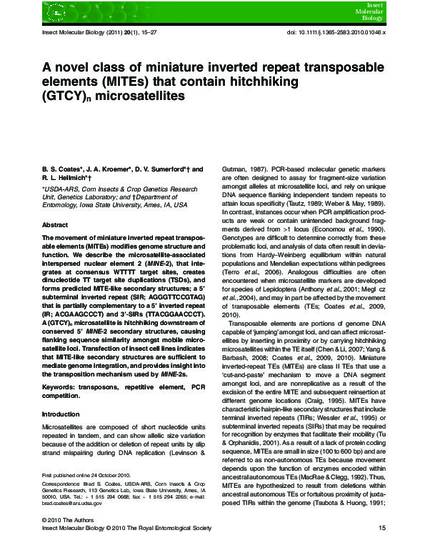
The movement of miniature inverted repeat transposable elements (MITEs) modifies genome structure and function. We describe the microsatellite-associated interspersed nuclear element 2 (MINE-2), that integrates at consensus WTTTT target sites, creates dinucleotide TT target site duplications (TSDs), and forms predicted MITE-like secondary structures; a 5' subterminal inverted repeat (SIR; AGGGTTCCGTAG) that is partially complementary to a 5' inverted repeat (IR; ACGAAGCCCT) and 3'-SIRs (TTACGGAACCCT). A (GTCY)(n) microsatellite is hitchhiking downstream of conserved 5'MINE-2 secondary structures, causing flanking sequence similarity amongst mobile microsatellite loci. Transfection of insect cell lines indicates that MITE-like secondary structures are sufficient to mediate genome integration, and provides insight into the transposition mechanism used by MINE-2s.
Available at: http://works.bepress.com/richard_hellmich/21/

This article is from Insect Molecular Biology; 20 (2011); 15-27; doi: 10.1111/j.1365-2583.2010.01046.x